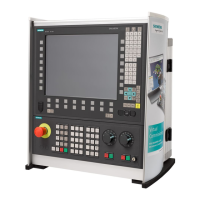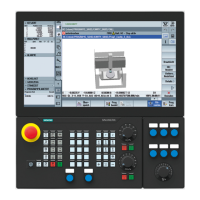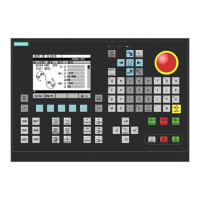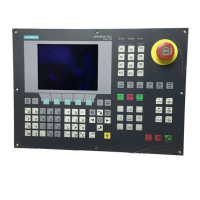Detailed Description
2.2 Flat D number structure
Tool Compensation (W1)
Function Manual, 08/2005 Edition, 6FC5397-0BP10-0BA0
2-23
Delete D no. via part program
• With flat D number
$TC_DP1[d] = 0
Compensation data set is deleted from NCK with number d.
The memory is then free for the definition of another D number.
• Without flat D number
$TC_DP1[t][d] = 0=
Cutting edge d of tool t is deleted.
• $TC_DP1[0] = 0
Delete all D compensations from NCK.
Active compensation data blocks (D numbers) cannot be deleted. It may, therefore, be
necessary to program D0 before deleting.
Tool MDs
The following machine data affect the way tools and cutting edges (D numbers) work in the
NCK:
• MD20270 $MC_CUTTING_EDGE_DEFAULT
• MD20130 $MC_CUTTING_EDGE_RESET_VALUE
• MD20120 $MC_TOOL_RESET_VALUE
• MD20121 $MC_TOOL_PRESEL_RESET_VALUE
• MD22550 $MC_TOOL_CHANGE_MODE
• MD22560 $MC_TOOL_CHANGE_M_CODE
• MD20110 $MC_RESET_MODE_MASK
• MD20112 $MC_START_MODE_MASK
2.2.5 Programming the T number
When the "Flat D number structure" function is active, NC address T continues to be
evaluated, i.e., the programmed T number and the active T number are displayed. However,
the NC determines the D number without reference to the programmed T value.
The NC detects 1 master spindle per channel (via the spindle number, which can be set
using MD).
Compensations and the M6 command (tool change) are only calculated with reference to the
master spindle.
An address extension T is interpreted as a spindle number (e.g., T2 = 1; tool 1 to be selected
on spindle 2); a tool change is only detected if spindle 2 is the master spindle.
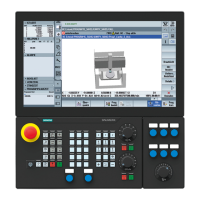
